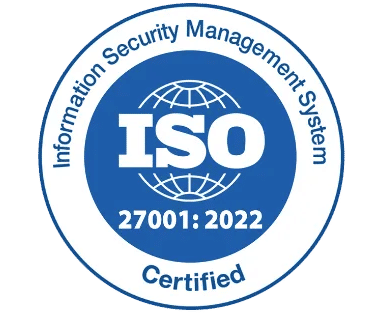Contract Data Management | Everything You Need To Know (2025)

Contracts are the backbone of business operations, governing relationships with clients, vendors, employees, and partners. Yet, many organizations still rely on outdated methods spreadsheets, shared drives, and email chains to manage critical contract data.
A disorganized contract management process does not just slow you down it increases legal and financial risks. This blog explores how efficient contract data management can transform the way organizations handle contracts.
What Is Contract Data Management
It involves systematically storing, tracking the contracts, and analysing contract-related information throughout an organization. This process covers both pre-execution and post-execution phases of the contract lifecycle, ensuring agreements are effectively managed from creation to completion.
A well-structured data management strategy begins with organized storage and accessibility, allowing businesses to retrieve, interpret, and utilize contract information efficiently. When implemented correctly, it enhances operational efficiency, mitigates risks, and empowers organizations to make data-driven decisions.
For instance, in vendor management a business with well-maintained contract data can easily assess supplier performance, renegotiate terms proactively, and avoid unexpected cost escalations.
By embracing a structured contract data management, organizations can drive efficiency, strengthen business relationships, and maximize the value of every contract.
Why Do Businesses Needs to Track Contract Data
By tracking effective contract data, your business can stay organized, mitigate risks, and drive better outcomes across all contract-related activities. Here is how it helps,
- Tracking contract data ensures timely renewals and avoids penalties, keeping critical dates in focus.
- It strengthens compliance by monitoring legal obligations, minimizing the risk of fines.
- Access to current data enables informed decisions, helping businesses align with their strategic goals.
- It ensures security by storing sensitive data in a centralized, encrypted system with restricted access.
- Strong security measures help businesses stay compliant, protect valuable information, and avoid legal or financial risks, building trust with clients and partners.
Essential Data to Track During the Process
Effective contract data management revolves around prioritizing key data that is critical for smooth operations and minimizing risk. Here’s a breakdown of the most vital data points to keep in mind.
1. Critical Dates and Deadlines
One of the most significant aspects of process is tracking key dates, including renewal dates, expiration dates, and milestones. Automating these reminders ensures that your team does not miss important deadlines, such as contract renewals, amendments, or performance evaluations.
Missing a renewal or milestone could cause operational disruptions, delay product or service delivery, or even harm important business relationships.
By staying ahead of these dates, you can ensure continuous contract validity and avoid any unnecessary interruptions in your business operations.
2. Obligations and Responsibilities
Every contract outlines specific obligations for each party involved whether they are financial, service-related, or performance-based. It is crucial to track these commitments carefully to ensure compliance on both sides.
Fulfilment of these obligations is not only a legal requirement but also an integral part of maintaining trust and a solid business relationship.
Whether it is timely payments, service delivery schedules, or agreed-upon performance standards, tracking obligations helps prevent breaches that could lead to legal penalties or the deterioration of long-term partnerships
3. Risk Provisions and Mitigation Clauses
Risk management is a fundamental component of contract management, and understanding risk clauses is essential.
These provisions typically address how risks are handled within the agreement, such as termination rights, indemnity clauses, and penalties for non-compliance. A comprehensive understanding of these clauses allows businesses to anticipate and address potential risks before they escalate into bigger issues.
By identifying clauses that define the terms for contract termination or liability mitigation, you can make informed decisions on how to protect your business and minimize legal exposure. For instance, ensuring that termination rights are clearly defined can help you exit an agreement when conditions are not met without facing legal ramifications.
4. Financial Terms and Payment Schedules
Monitoring the financial elements of a contract, such as payment terms, pricing adjustments, and penalties, is vital for maintaining healthy cash flow and financial stability.
This includes tracking payment deadlines and any potential changes in pricing or service fees throughout the contract’s duration.
Failure to track and manage these financial terms can lead to unexpected costs, disputes, or missed payments, which may result in strained business relationships or financial setbacks. A clear understanding and visualization of these financial terms often facilitated tools like dashboards can help businesses manage cash flow, prevent financial surprises, and maintain budget control.
5. Contract Performance and Compliance Tracking
An ongoing review of contract performance and compliance is essential for ensuring that both parties adhere to the terms agreed upon. T
his involves monitoring whether the responsibilities outlined in the contract are being fulfilled, including meeting deadlines, maintaining quality standards, and achieving other measurable objectives.
Proactive performance tracking helps prevent potential breaches, ensuring both parties continue to benefit from the agreement without escalation of problems.
Recommended Read: Contract Compliance Management
Challenges Faced Due To Poor Contract Data Management
Every contract holds valuable business intelligence financial terms, risk clauses, renewal deadlines, and compliance obligations. Yet, without a structured system to manage this data, businesses face missed opportunities, operational slowdowns, and legal pitfalls.
1) Slower Business Operations
When data is scattered across emails, spreadsheets, or shared folders, finding the right information becomes time-consuming. Teams struggle to access the latest data, track changes, or verify details.
This slows down decision-making and creates unnecessary delays. A structured data system ensures businesses can access accurate information instantly.
2) Miscommunication Between Departments
Every department in a business interacts with contract data differently. Finance needs data related to pricing, invoices, and payment schedules. Legal teams require access to terms, obligations, and risk clauses.
HR handles employment contracts, while sales tracks customer agreements. When contract data is stored in separate, unconnected systems, teams work in isolation, leading to miscommunication and inefficiencies.
A centralized contract data system ensures that all teams have access to consistent, accurate information.
3) Missed Business Opportunities
Best Practices of Contract Data Management
Dealing with scattered records and manual processes can slow things down and lead to costly mistakes. Fortunately, there are practical solutions that help businesses manage details more efficiently. Here’s how companies can overcome these issues and improve their approach:
1) Bring Everything Together in One System
When information is stored across different platforms, it creates confusion and increases the chances of errors. Having a single, centralized system ensures that every team works with the most current details.
This removes the hassle of searching through multiple sources and keeps everything up to date. With a centralized approach, legal, finance, and other departments can access the same records effortlessly, making day-to-day operations smoother.
2) Set Clear and Consistent Rules
Having a standard way to record and organize information prevents miscommunication. Establishing structured formats, naming conventions, and legal-approved guidelines ensures consistency across the board.
When everyone follows the same approach, records become easier to find, understand, and update.
This reduces unnecessary back-and-forth between teams and allows for faster decision-making.
3) Encourage Cross-Team Collaboration
Managing important details is not just about tools it is also about teamwork. Regular check-ins between different departments ensure that nothing gets overlooked.
When teams like legal, finance, and operations work together, they can catch mistakes early and address potential issues before they become serious problems.
Open communication leads to better workflows, fewer delays, and improved efficiency.
4) Automate Repetitive Tasks
Manual tracking is slow, prone to mistakes, and takes up valuable time. Using smart technology helps businesses handle routine tasks effortlessly.
Automation can take care of data entry, reminders, and status updates, ensuring deadlines are never missed.
Intelligent tools can also provide insights into trends and risks, helping businesses make informed decisions without spending hours analysing details manually.
5) Keep a Record of Every Change
Tracking contract data is just as important as storing information. Without a clear history of modifications, teams might work with outdated details or make incorrect assumptions.
A system that logs every edit ensures transparency, making it easy to see who made changes and why.
This eliminates confusion, helps teams stay aligned, and minimizes the risk of errors.
Benefits of Contract Data Management
Now that we have explored the best practices for contract data management, let us learn the key benefits of implementing these strategies to ensure your business operates more efficiently and effectively.
1) Improved Efficiency
It helps organizations store all important documents and information in one central location. This streamlined approach saves significant time by making it much easier to find, update, and manage contracts.
When everything is organized in one place, teams no longer need to waste time searching through multiple systems or digital files.
This results in faster access to important details, enabling quicker decision-making and reducing the time spent on administrative tasks.
2) Reduced Risk of Errors
By implementing clear guidelines, consistent formats, and automation, it significantly minimizes the likelihood of human errors.
Manually managing contracts and data can often lead to mistakes, whether it is misinterpreting clauses or missing important deadlines.
This level of accuracy is crucial, especially when managing multiple contracts that involve varying terms, dates, and obligations.
3) Leverage Data to Accelerate Contracting
Using data can drastically speed up the contracting process by automating contract creation, enabling real-time collaboration, and streamlining negotiations.
With access to accurate data, contract creation becomes quicker and more efficient, while real-time updates ensure that everyone is on the same page.
Additionally, tracking key terms and clauses with data insights speeds up negotiations, helping businesses reach agreements faster and with fewer revisions.
4) Improved Decision-Making
Data provides valuable insights that drive better decision-making. Businesses can leverage analytics to assess previous contracts, track key metrics, and forecast future outcomes.
With this information, teams can make more informed decisions, cutting down on the time spent deliberating over options and ensuring faster, more effective contract finalization.
5) Reduced Errors and Confusion
Manual contract data management processes often lead to errors or confusion, which can significantly slow down contracting, collaboration, and negotiations.
An effective system can automate many tasks, reducing human error and ensuring that everyone is working with accurate, up-to-date information. This results in fewer revisions and quicker resolutions, accelerating the entire process.
Conclusion
In a world where speed, accuracy, and efficiency are paramount, the right system is essential. Our solution empowers your team to stay ahead of the curve, transform how contracts are managed, and drive business success.
By automating processes, reducing risk, and enabling faster decision-making, you’ll gain the competitive edge you need to thrive. With CLM 365, you are not just managing contracts, you are building a stronger, more efficient future.
Frequently Asked Questions
What is contract data?
Contract data refers to the information contained within contracts, such as terms, clauses, obligations, key dates, financial details, and other critical elements that define the agreement between parties. It is used to manage, track, and analyse the lifecycle of a contract.
What industries benefit the most from contract data management systems?
Industries that rely heavily on contracts, such as legal, finance, healthcare, manufacturing, and government, benefit the most from contract data management systems. These systems help streamline contract processes, improve compliance, and mitigate risks across complex agreements.
What are the best practices for securing contract data?
- Use encryption to protect data at rest and in transit.
- Implement strict access controls with role-based permissions.
- Conduct regular audits to monitor access and modifications.
- Backup contract data regularly to prevent data loss.
- Ensure compliance with relevant data protection regulations.
How can contract data monitoring improve business efficiency?
It boosts efficiency by automating processes, reducing errors, ensuring compliance, and providing quick access to key information. It streamlines contract creation, approvals, and negotiations, enabling faster decisions and better collaboration.










_svxLrd-8yH.png)

_2VYSFUTN5m.png)

_JiluXJRGNl.svg)

_2djTKNocf.png)





_Rapo0hRMBy.png)










